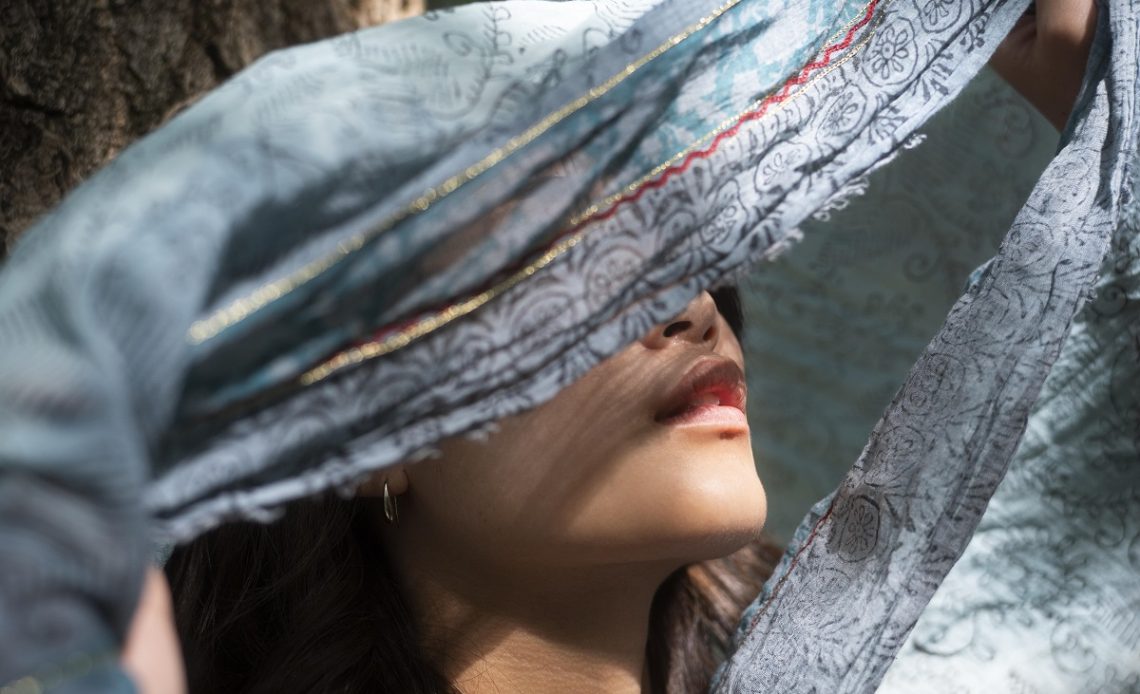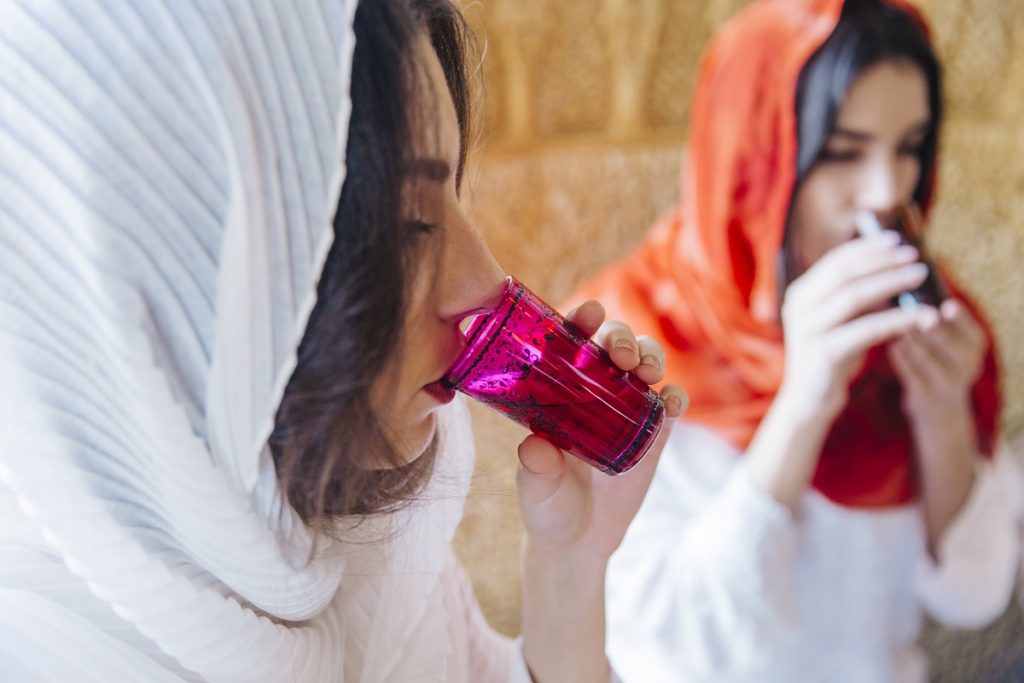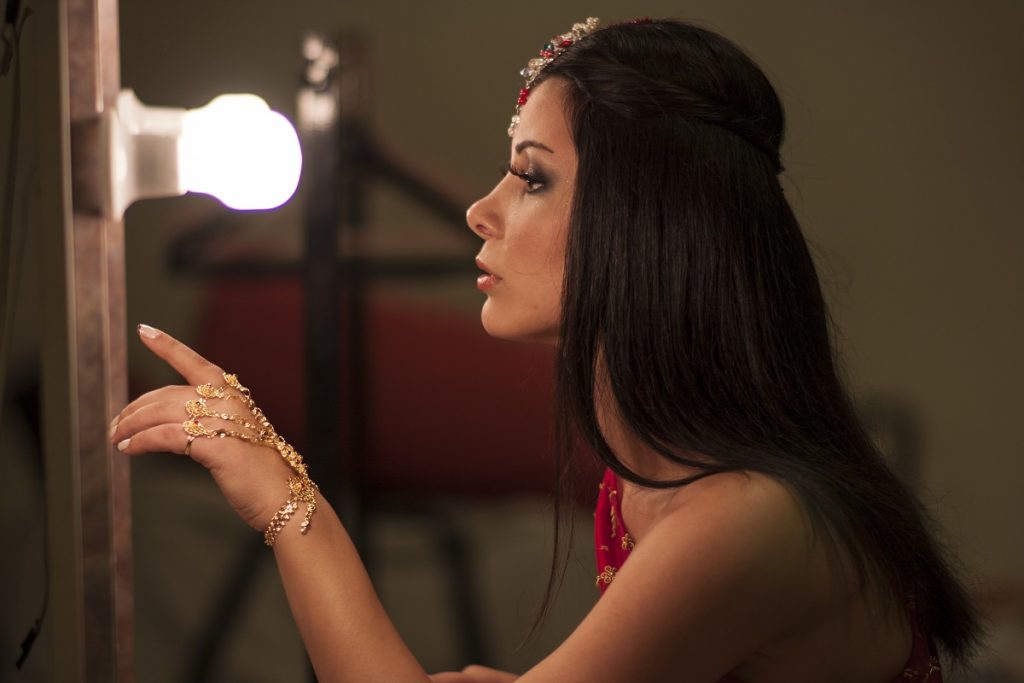
Arab culture has fascinated us for many years. Its richness and relationship with sensuality are deeply rooted. Far from clichés, eroticism is subtle and codified, with every element, especially fabrics and perfumes, contributing to the development of this silent but meaningful language. How are these elements perceived and used throughout the story?
In this article, we explore the Arab erotic lifestyle, focusing on the aesthetic, sensory and historical aspects of these elements.
Revealing fabrics
There are different types of fabric in the Arab tradition, and each has its own symbolism. Silk, for example, is considered one of the most precious fabrics, symbolizing luxury and wealth. Satin, with its smooth, shiny surface, represents elegance. Velvet, renowned for its soft texture, evokes sensuality and prestige due to its historical importance.
Oriental fabrics sublimate the silhouette and create an impression of mystery. A fine, translucent silk veil acts like a transparent screen, attracting curiosity. Loose draped garments also emphasize the body’s curves while floating gracefully. Satin and velvet subtly enhance the form, while a delicate belt elegantly defines the waist.
What’s more, fabrics in Arab culture are true messengers. Their patterns and colors carry meaning. Floral patterns can represent beauty and fertility, while certain colors like yellow or purple symbolize joy or power. Specific patterns tell a story without the need for words. The tactile experience of fabric adds a sensual dimension, making the garment more intimate and luxurious. Choosing a fabric is a subtle way of expressing personality and seduction.

The enchantment of scents
The history of perfume and incense in the Arab world is rich and ancient. Indeed, perfume is linked to religious rituals, medicinal practices and seduction. This tradition has its origins in ancient Arabia. In those days, incense, like myrrh, was a precious commodity used in religious ceremonies to purify the atmosphere and venerate the gods.
In the Middle Ages, advances in oriental medicine perfected the art of distilling and extracting essential oils. This gave rise to more delicate fragrances and more bewitching scents.
Indeed, traditional Arabic perfumery relies on high-quality natural ingredients such as oud, musk and jasmine. Oud is a dark resin derived from Agarwood, known for its deep, woody fragrance. Musk, on the other hand, exudes a warm, powerful fragrance, and is said to have aphrodisiac virtues. Jasmine, on the other hand, offers a rich, floral fragrance associated with love and beauty.
Thus, in Arab cultures, fragrances play an important role in attraction and ambience. Choosing a fragrance can reflect a personality and create an impression of purity and refinement. For this reason, burning incense enhances the atmosphere of a home, while perfuming oneself is a personal art. Fragrance and incense are a subtle language that creates memorable experiences and enhances seduction.

The radiance of jewelry
In Arab societies, jewelry is more than just an ornament. They occupy an important place. They symbolize beauty and seduction, and carry a rich cultural and historical significance. Wearing jewelry in the Arab world has a long history, dating back to antiquity. This history dates back to the period when ornaments made of gold, silver and semi-precious stones were discovered. In Arab tradition, jewelry is often handed down from generation to generation.
Moreover, traditional Arab jewelry styles are varied and reflect cultural richness. For example, gold, considered the precious metal par excellence, represents wealth and power. Gold jewelry generally features detailed motifs and was reserved for special occasions. Silver, a prized precious metal, was traditionally adorned with delicate engravings and brightly-colored stones. Similarly, silver jewelry was invested with protective meanings linked to popular beliefs. Similarly, precious stones such as emeralds and rubies added a touch of luxury.
To seduce, the way jewelry is worn is significant. For example, necklaces accentuate the beauty of the neck, bracelets embellish the hands, and earrings enhance the face. Jewelry thus draws the eye to selected areas of the body. When a woman moves, the gentle tinkle of pearls subtly draws attention to her ankles and feet.
The art of seduction: cultural and historical aspects
The eloquence of words is an essential part of the art of seduction in Arab societies. Indeed, the ability to speak well and tell stories is highly valued. Poetry, rich in metaphor and emotion, remains a powerful means of expressing love and desire.
What’s more, the gaze, usually discreet but charged with emotion, is also crucial in non-verbal communication, enabling deep feelings to be conveyed without words. You can also add an attitude full of dignity and grace, for an elegant posture.
Music, with its haunting melodies, is also important for creating a mood and expressing emotions. It evokes feelings of joy or melancholy, forging emotional bonds between people. As an artistic expression, dance is also a way of expressing emotions and attracting the eye with its swaying movements. So dance is both a means of social and artistic expression, as well as a great means of seduction. However, like poetry and music, dance is also part of the Arab art of seduction.
Far from being anodyne, Arab eroticism is expressed through fabrics and perfumes. It’s a universe where textures and scents intertwine to give you the tools to seduce. This subtle poetry, along with the music, expresses the lightness of these moments of seduction in Arab culture.







